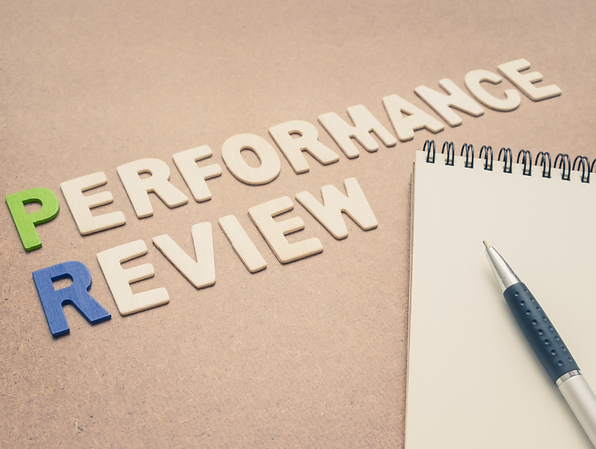Performance reviews often evoke a sense of dread, for both employees and managers. However, when conducted correctly, the performance process can be valuable tools that foster employee development, strengthen relationships, and give employees the opportunity to be heard. This leads to higher retention and productivity, reducing the resources involved in recruitment and onboarding new employees. As we are now halfway through the year, it's a great time to conduct formal performance reviews. In this blog, we outline the steps to take to make sure your performance process is effective, timely, and relevant to your organization.
The performance process is an ongoing, year-long process. It serves as an opportunity for managers to set clear expectations, help employees identify their strengths and areas for growth, and create a constructive dialogue. Prior to performance reviews, you may wish to conduct an anonymous psychological health and safety survey to understand and prioritize the factors that are negatively or positively impacting your employees at work. LIHR facilitates the Guarding Minds at Work. Psychological Health and Safety Survey and can help you identify areas of concern and create a plan for action.
While feedback surveys, informal conversations, and coaching are essential for day-to-day operations, they should not replace formal performance review meetings. Nor vice versa. These reviews offer a confidential space for employees to receive feedback and express their concerns safely. Additionally, documenting the performance review discussion demonstrates your commitment to supporting employee growth and provides a reference point in case of future performance-related issues.
By planning performance reviews to occur twice a year, or quarterly, rather than the traditional annual occurrence, managers can keep a handle on things. Especially if you manage a large team and don't have as many opportunities to connect one-on-one with employees - you may be opening the organization up to risk.
While feedback surveys, informal conversations, and coaching are essential for day-to-day operations, they should not replace formal performance review meetings. Nor vice versa. These reviews offer a confidential space for employees to receive feedback and express their concerns safely. Additionally, documenting the performance review discussion demonstrates your commitment to supporting employee growth and provides a reference point in case of future performance-related issues.
By planning performance reviews to occur twice a year, or quarterly, rather than the traditional annual occurrence, managers can keep a handle on things. Especially if you manage a large team and don't have as many opportunities to connect one-on-one with employees - you may be opening the organization up to risk.
Be Conversational In Tone | Maintain a friendly and approachable demeanour throughout the review. |
Ensure Privacy | Conduct the performance review in a private space where both parties can openly communicate. |
Emphasize Confidentiality | Assure employees that the discussion is confidential. |
Prepare in advance | Gather your thoughts and notes to provide comprehensive feedback. Ask employees to prepare in advance as well – what do they think they did really well at, and what could they have done differently? |
Provide Examples and Suggest Actions | Illustrate feedback with specific instances and propose actionable steps for improvement. |
Celebrate the Wins | Recognize and appreciate employees’ accomplishments to reinforce positive behaviour. |
Offer Constructive Feedback | Focus on providing feedback that helps employees improve their performance. |
Seek Feedback as a Leader | Encourage employees to share their thoughts and suggestions for your own development. |
Avoid Taking Feedback Personally | Maintain a professional and objective outlook during the review process. |
Encourage Dialogue | Give employees an opportunity to express their thoughts and actively listen with empathy. |
Collaborate on Solutions | Brainstorm potential solutions together to address challenges and obstacles. |
Document the Conversation | Keep accurate notes to refer to in the future as needed. |
Follow-up Promptly with Coaching Moments | Ensure timely communication and support to help employees implement feedback and improve performance. |
Each performance review is unique but by following the above checklist, and conducting reviews more frequently than once a year, you can eliminate the apprehension associated with these meetings. By demonstrating your commitment to employees’ career development and ensuring clear expectations, you will enhance your review process and overall team effectiveness.
For professional HR advice that you can trust, contact us today!
From the LIHR team and lead collaborator, Allison Leach CHRP, HR Advisor at Lisa Isaac HR Professional Services Allison@LisaIsaacHR.com
Lisa Isaac HR Professional Services



